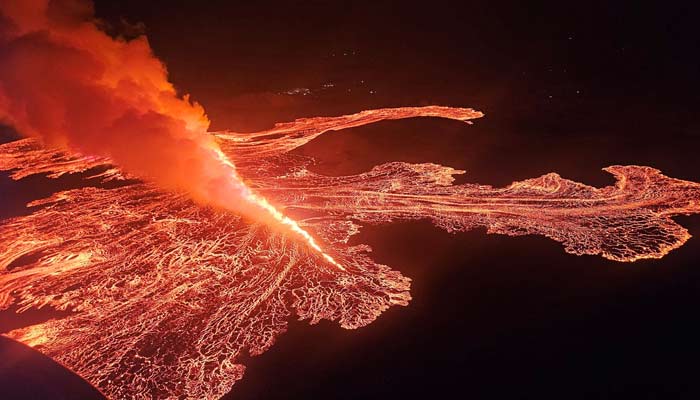
The Iceland Meteorological Office said that a volcano near the capital erupted late on Wednesday evening for the tenth time in three years, releasing lava and smoke, but there was no disruption to air traffic or infrastructure.
Iceland, with a population of nearly 400,000, lies on a fault line between the Eurasian and North American tectonic plates, making it a seismic hotspot with geysers, geysers and dozens of volcanoes.
Live broadcasts on social media from the area showed hot lava glowing in bright yellow and orange shades shooting into the night sky.
The Iceland Meteorological Office said that the first signs of the eruption were recorded just 45 minutes before a massive earth fissure occurred, now estimated at about three kilometers in length, due to magma making its way through the earth’s crust.
The authorities had previously warned of volcanic activity, as magma accumulated under the Reykjanes Peninsula, about 30 kilometers southwest of the capital Reykjavik, where the last eruption only ended on September 6.
However, the Met Office said there had been no noticeable increase in seismic activity in recent weeks.
She added that Wednesday’s eruption is expected to be much smaller than the previous eruption.
The outbreaks on the Reykjanes Peninsula, known as fissure eruptions, have not directly affected the capital and are not causing significant spread of ash into the stratosphere, avoiding disruption to air traffic.
Reykjavik’s Keflavik Airport said on its website that flights were not affected and no critical infrastructure was at risk, but Blue Lagoon, a luxury geothermal spa, closed and evacuated its guests, according to public radio. Four-wheel drive car.
The nearby fishing town of Grindavik, which was inhabited by nearly 4,000 people before an evacuation order was issued in December last year, remains mostly deserted due to the periodic threat of lava flows.
The Civil Protection Agency said in a statement that there was no sign of lava flowing towards the town, but about 50 homes inhabited by returnees were evacuated.
The region’s geological systems remained dormant for 800 years, then reactivated in 2021, and have since erupted with increasing frequency, with their latest eruption being the sixth so far in 2024.
Experts have warned that Reykjanes is likely to witness recurring volcanic eruptions for decades, perhaps even centuries.
